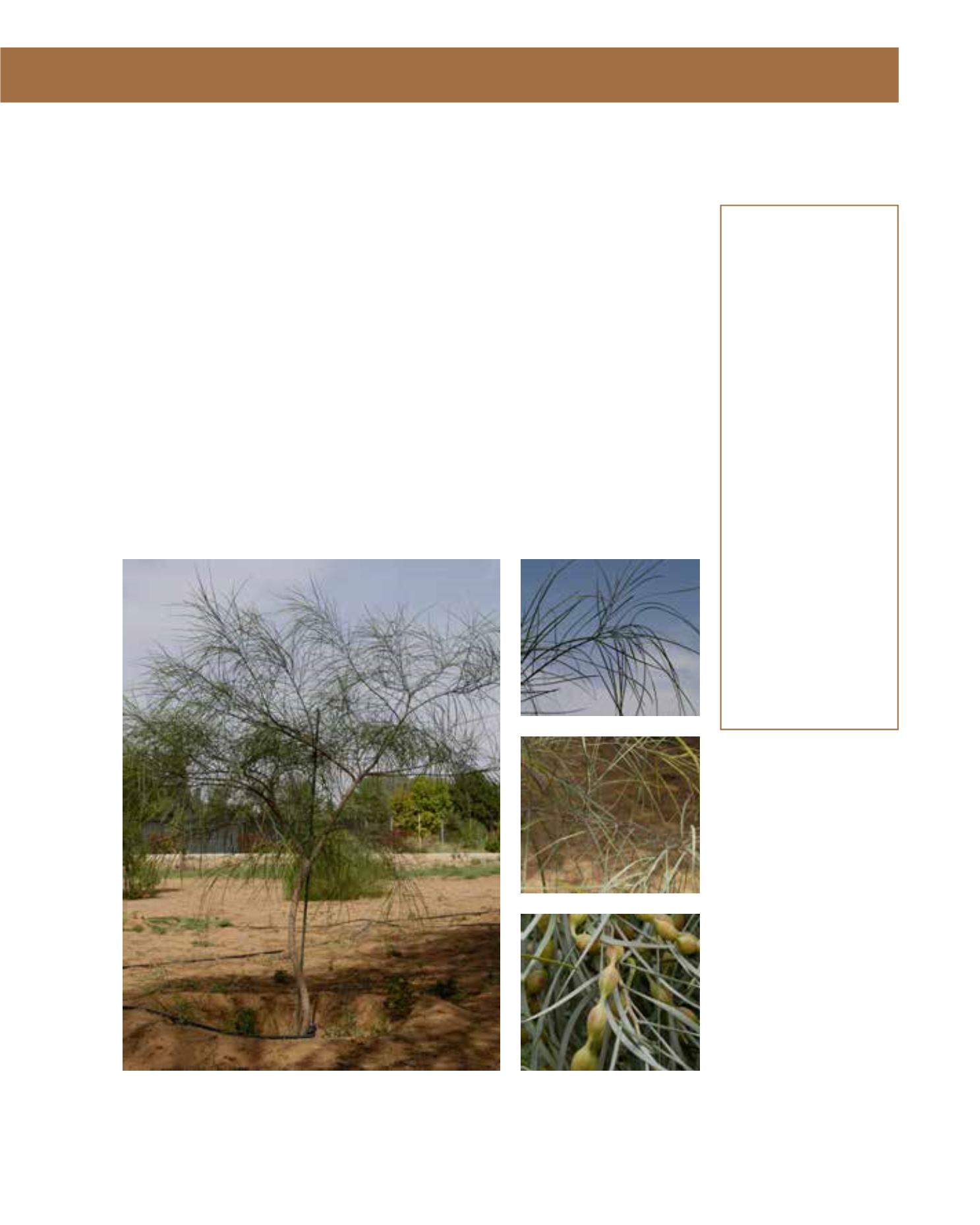

GENERAL
Origin
:
Mediterranean,
sub-tropical
Vigour
:
fast growing
Humidity
:
very arid, semi-
arid
Propagation :
sowing and
pricking out
Maintenance :
low
CONDITIONS
Urban climate :
resistant
Dessication :
resistant
Stagnant water :
vulnerable
Irrigation
:
low
Salinity/ppm :
high (3500 ppm)
Hardiness
:
-9°C
SHAPE
Type
:
shrub
Height
:
3 m-4 m
Spread
:
4 m-5 m
Foliage
:
evergreen
FLOWER
Colour
:
pale yellow
Period
:
March -
December
Smell
:
pleasantly
scented
FRUIT
Type of fruit :
pod
Fruit size
:
13 cm
This is a beautiful, slightly weeping, tall shrub, widespread in its native Australia. Its habitat there
is amongst tall trees, growing in gravelly soils, sand and clay on gentle slopes and wasteland or
in undisturbed natural vegetation. It has high potential for planting in Arriyadh. The shrub has
an angular, branching structure with drooping tips bearing narrow, willow-like soft phyllodes or
leaves, distinguished by their silvery blue-green colour. Stems and leaves are reddish-pink when
young. Profuse, pale yellow sprays of fragrant flowers emerge from October onwards until early
spring, from conspicuous red bracts. It is a very adaptable shrub, tolerating most soils and lime.
It is also very tolerant of extended dry periods, moderate frosts up to –10°C, and also saline soils.
A. iteaphylla grows in full sun, even tolerating partial shade, and needs a well-drained position.
No irrigation is required once established, but watering is necessary over long dry periods. The
shrubs attract birds and are aromatic. Propagation is by scarifying the seed or boiling it in water.
Plants flower well after two years. Low maintenance is required, branches do not resprout after
pruning. An annual application of a slow-release fertiliser improves growth. A. iteaphylla has
a high landscape value. It makes a good screen or low windbreak, and can be planted as an
ornamental feature or an interesting hedge. A prostrate form can be used as a mounding ground
cover. In the garden, A. iteaphylla is an acacia which provides colour during the winter.
26
Acacia iteaphylla,
Mimosaceae
Willow-leaf Wattle
















